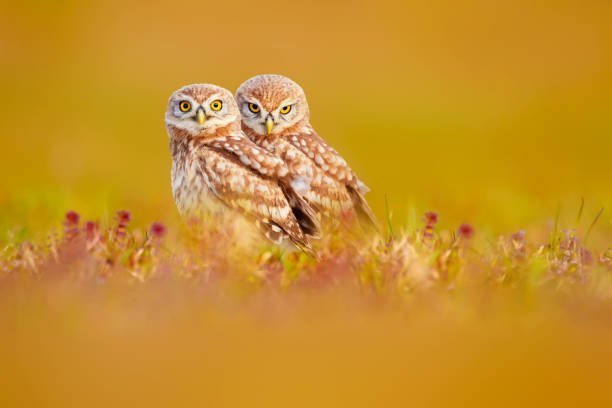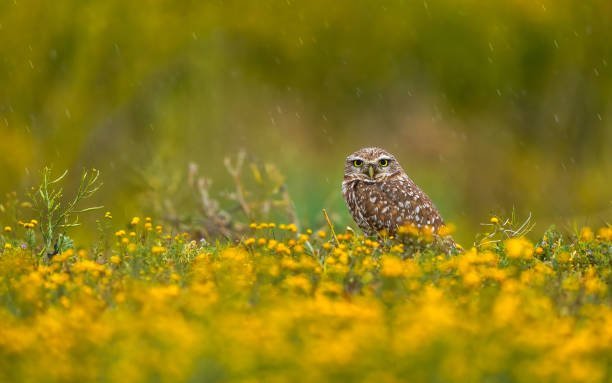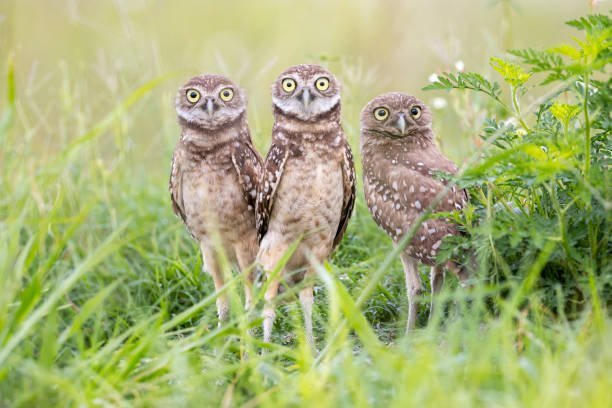Which types of injuries are most commonly treated during owl rescues?

Introduction:
In this article, I’ll delve into the fascinating world of owl rescues, shedding light on a crucial aspect of wildlife conservation and rehabilitation. Owls, with their majestic presence and enigmatic allure, often find themselves in need of human intervention due to a variety of injuries and ailments. These magnificent birds of prey, known for their nocturnal hunting prowess and silent flight, face a range of challenges in the wild. While owls are remarkably adapted to their environments, they are not immune to accidents, diseases, or human-induced threats.
Throughout this exploration, we will examine the types of injuries and afflictions that are most commonly encountered during owl rescues. Understanding the prevalent issues that necessitate rescue and rehabilitation efforts is vital in preserving the well-being of these iconic birds and ensuring their continued presence in our ecosystems.
Wing Fractures:
Wing fractures are one of the most common injuries encountered during owl rescues. These injuries often result from a variety of sources, including collisions with vehicles or structures, falls from nesting sites, or direct trauma. Wing fractures can range from minor hairline cracks to severe breaks that render the wing non-functional. The severity of the fracture determines the prognosis for the owl’s recovery and release back into the wild.
In cases of wing fractures, prompt intervention is crucial to maximize the chances of rehabilitation. Wildlife rehabilitators and veterinarians typically conduct a thorough examination, which may include X-rays, to assess the extent of the damage. Treatment may involve splinting, surgery, or other medical procedures to repair the fracture. After treatment, the owl undergoes a period of rest and rehabilitation to regain strength and mobility in the affected wing. Successful rehabilitation and release depend on the bird’s ability to regain full flight capabilities, which is closely monitored before returning the owl to its natural habitat.
Vehicle Collisions:
Owls, particularly those with nocturnal habits, are susceptible to vehicle collisions, especially during low light conditions. These collisions can result in various injuries, ranging from minor bruises and abrasions to more severe trauma, including fractures, internal injuries, and head trauma. Vehicle collisions are a significant threat to owl populations, as they often occur while the birds are in pursuit of prey, crossing roads, or during flight. The impact can cause immediate injuries or lead to secondary complications due to stress and shock.
Rescuing owls involved in vehicle collisions is a priority for wildlife rehabilitators and conservationists. Upon rescue, the owl undergoes a thorough examination to assess the extent of injuries, including internal damage that may not be immediately apparent. Treatment may involve pain management, surgery, or supportive care. Recovery and rehabilitation aim to address both physical injuries and psychological stress. Once an owl recovers, it undergoes flight tests to ensure its ability to hunt and evade danger in the wild. Rehabilitation efforts, along with road safety initiatives, play a crucial role in mitigating the impact of vehicle collisions on owl populations.
Head Trauma:
Head trauma is a significant concern during owl rescues, often resulting from collisions with vehicles, windows, or other objects. Owls have relatively large eyes, which can make them prone to head injuries when striking solid surfaces. Head trauma can have serious consequences, including concussions, brain injuries, and impaired sensory perception. These injuries can affect an owl’s ability to hunt, navigate, and survive in the wild.
Upon rescuing an owl with head trauma, rehabilitation efforts are focused on minimizing further stress and injury. Care providers conduct thorough examinations, including neurological assessments, to evaluate the extent of damage. Treatment may involve supportive care, such as pain management and anti-inflammatory medication. Some owls with head trauma may require an extended period of rehabilitation to regain their full cognitive and sensory abilities. Success in rehabilitating owls with head trauma depends on the severity of the injury and the bird’s capacity to recover. The goal is to release them back into their natural habitat once they have made a complete recovery.
Starvation and Dehydration:
Starvation and dehydration are common issues in owl rescues, particularly among nestlings and fledglings. These young owls may face difficulties in finding food and water or may be orphaned and unable to feed themselves. Starvation and dehydration can lead to weakness, emaciation, and compromised health.
Rescued owls suffering from starvation and dehydration require immediate attention to address their nutritional needs. Caregivers provide a suitable diet tailored to the species and age of the owl, ensuring they receive adequate nourishment and hydration. Young owls may require hand-feeding until they can hunt effectively. Rehabilitation includes monitoring the bird’s progress, weight gain, and overall health until they are fit for release.
Electrocution Injuries:
Electrocution is a significant threat to owls, especially in urban and rural areas with power lines and infrastructure. Owls may accidentally land on electrical equipment or collide with live wires, resulting in severe burns and electrocution injuries. Electrocution can cause both visible external damage and internal injuries.
Owls suffering from electrocution injuries need immediate rescue and treatment. Wildlife rehabilitators assess the extent of the injuries, which may include burns, fractures, or nerve damage. Treatment involves wound care, surgery if necessary, and pain management. After healing, rehabilitated owls are closely observed for any lingering effects and may undergo flight tests to ensure they can hunt and fly without impairment.
Infections and Diseases:
Owls can be vulnerable to various infections and diseases, including avian diseases like avian influenza and aspergillosis. These infections can affect the respiratory and digestive systems, leading to severe health issues if left untreated.
Upon rescue, owls with infections or diseases undergo thorough examinations and diagnostic tests. Treatment may involve antibiotics, antifungals, or other medications as prescribed by a veterinarian. Rehabilitation efforts focus on not only curing the infection but also monitoring the owl’s overall health and strength. Successful recovery and release depend on the owl’s ability to regain health and immunity.
Entanglement in Human-Made Objects:
Owls can become entangled in various human-made objects, such as fishing lines, netting, and discarded materials. Entanglement poses a significant threat to their well-being, potentially leading to injuries, stress, and difficulty in hunting or flying.
Rescue efforts for entangled owls involve carefully detangling them from the objects while minimizing stress and further injuries. Once the owl is freed, a thorough examination is conducted to assess any injuries sustained during entanglement. Treatment may include wound care, pain management, and rehabilitation to regain strength and mobility. Success in rehabilitating entangled owls depends on the severity of injuries and the bird’s overall health.
Orphaned Nestlings:
Orphaned nestlings are often rescued when their parents are injured, killed, or cannot care for them. These young owls are entirely dependent on their parents for food and protection, making them vulnerable when left on their own.
Rescued orphaned nestlings require specialized care and feeding, as they are too young to fend for themselves. Wildlife rehabilitators provide a surrogate parental role, ensuring they receive the appropriate diet and attention needed for their growth and development. Rehabilitation for orphaned nestlings is a delicate process, as it aims to prepare them for a successful release back into the wild once they reach independence.
These various types of injuries and challenges encountered during owl rescues underline the critical role of wildlife rehabilitators, veterinarians, and conservationists in ensuring the well-being and survival of these magnificent birds. Rehabilitation efforts are instrumental in mitigating the impact of injuries and threats that owls face in their natural habitats, contributing to the conservation of these remarkable avian species.
Conclusion:
I hope this exploration of the types of injuries commonly treated during owl rescues has shed light on the tireless efforts of wildlife rehabilitators and the challenges faced by these remarkable birds. Owls, with their mysterious allure and vital role in ecosystems, are often at the mercy of human-induced threats and natural adversities.
In conclusion, the injuries owls sustain, ranging from wing fractures and vehicle collisions to head trauma, starvation, and electrocution injuries, highlight the need for timely rescue and rehabilitation. These dedicated efforts not only address physical injuries but also consider the psychological and environmental factors impacting owl populations. By tackling infections, entanglements, and caring for orphaned nestlings, wildlife conservationists play a vital role in safeguarding the future of these majestic birds.
As we strive to protect and rehabilitate owls, we contribute to the conservation of biodiversity and the delicate balance of our ecosystems, reminding us of the significance of coexisting with nature and the importance of preserving the natural world.










Post Comment